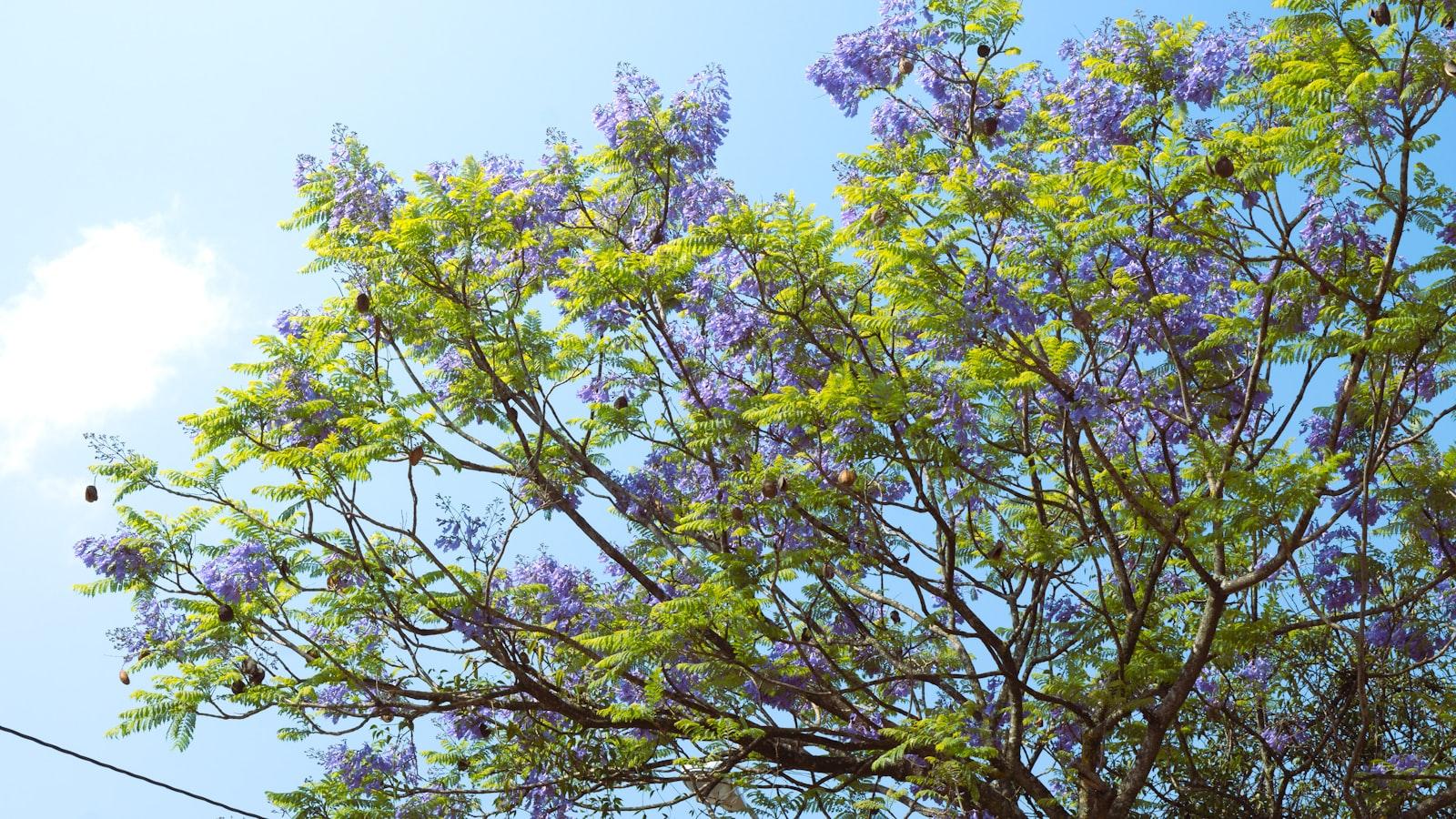Dive into the lush world of plant ecology, where nature’s intricate tapestry of life unfolds in fascinating ways. From symbiotic relationships to competitive interactions, plant ecology offers a window into the intricate balance of ecosystems. Join us on a journey through diverse plant ecology examples that showcase the beauty and complexity of nature’s interconnected web. Explore how plants adapt, thrive, and shape their environments, painting a vivid picture of the wonders that unfold in the botanical realm.
Table of Contents
- Exploring the Intricate Interactions in Plant Ecology
- Unlocking the Role of Biodiversity in Ecosystem Resilience
- Examining the Impact of Climate Change on Plant Communities
- Implementing Sustainable Practices for Promoting Plant Diversity
- Q&A
- Final Thoughts

Exploring the Intricate Interactions in Plant Ecology
In the intricate world of plant ecology, examples abound to showcase the fascinating relationships and dependencies within ecosystems. Take, for instance, the symbiotic partnership between mycorrhizal fungi and plants. These underground allies form a mutually beneficial bond where the fungi assist plants in nutrient uptake while receiving sugars in return. This intricate interaction not only sustains both parties but also contributes to the overall health of the ecosystem.
Another compelling example of plant ecology lies in the phenomenon of allelopathy, where certain plants release biochemicals that influence the growth and development of neighboring vegetation. Through this chemical warfare, plants can gain a competitive edge by inhibiting the growth of other species around them. Such interactions highlight the strategic adaptations and subtle warfare tactics nature employs for survival and dominance in the plant kingdom. With each example, we unravel the complex web of connections that shape the colorful tapestry of plant ecology.
Unlocking the Role of Biodiversity in Ecosystem Resilience
In the intricate tapestry of ecosystems, biodiversity plays a vital role in fostering resilience and sustainability. Plants, with their diverse forms and functions, provide excellent examples of how biodiversity contributes to ecosystem stability. From towering trees in the Amazon rainforest to delicate wildflowers in meadows, each species interacts with the environment in unique ways, forming a complex web of life that ensures ecosystem health.
Here are some fascinating plant ecology examples showcasing the importance of biodiversity:
- Mutualistic Relationships: Orchids and fungi often engage in mutualistic relationships where the plant provides nutrients to the fungus in exchange for essential minerals.
- Pollination Networks: Bees, butterflies, and birds play crucial roles in pollinating plants, promoting genetic diversity and the survival of various species.
- Adaptation Strategies: Desert plants, like cacti, have evolved unique adaptations such as storing water to thrive in arid environments.
| Plant Species | Adaptation | Habitat |
|---|---|---|
| Saguaro Cactus | Water storage in stem | Desert |
| Venus Flytrap | Insect-trapping leaves | Boggy areas |

Examining the Impact of Climate Change on Plant Communities
In the realm of plant ecology, the intricate dance between climate change and plant communities unveils a fascinating narrative. Picture vast meadows once brimming with colorful wildflowers now transformed by shifting weather patterns. These resilient plant populations adapt, migrate, or face decline in the face of environmental flux. The delicate balance between flora and climate intricately weaves a tapestry of adaptation and survival.
Delve deeper into the world of plant communities, where species diversity acts as both an armor and a vulnerability in the face of climate upheaval. Imagine a forest ecosystem, where towering trees provide shelter for an array of understory plants, each playing a crucial role in the web of life. As temperatures rise and rainfall patterns shift, the intricate relationships within these ecosystems face new challenges. Witness the beauty of nature’s resilience as some plant species thrive in the face of adversity while others struggle to find their place amidst changing environmental cues.
Implementing Sustainable Practices for Promoting Plant Diversity
Incorporating sustainable practices in gardening can have a significant impact on promoting plant diversity and ecological balance. By implementing techniques such as companion planting, you can create a mutually beneficial environment for different plant species to thrive. Pairing plants that complement each other in terms of nutrients, growth patterns, and pest resistance can enhance biodiversity in your garden.
Furthermore, utilizing organic fertilizers and natural pest control methods not only fosters a healthier ecosystem but also reduces the negative impact of chemicals on plant diversity. Embracing practices like mulching and composting not only enriches the soil but also encourages beneficial microbial activity, supporting a diverse range of plants to coexist harmoniously. By adopting these sustainable approaches, you not only contribute to the preservation of plant diversity but also create a vibrant and resilient garden ecosystem.
Q&A
Q: What are some fascinating plant ecology examples that showcase nature’s intricate web of interactions?
A: Discover how the Venus flytrap’s carnivorous habits serve as a prime example of adaptation within its ecosystem.
Q: How do symbiotic relationships among plants and insects illustrate the delicate balance of nature?
A: Dive into the world of pollination, where bees and flowers engage in a mutualistic relationship that sustains both species.
Q: Can you shed light on how plants in aquatic environments demonstrate unique ecological strategies?
A: Explore the resilience of aquatic plants like water lilies, which have evolved specialized adaptations to thrive in waterlogged conditions.
Q: What role do keystone species play in shaping plant communities and biodiversity?
A: Uncover the pivotal influence of keystone species such as the mighty oak tree, whose presence can dictate the diversity and stability of an entire ecosystem.
Q: How do invasive plant species disrupt local ecosystems and challenge native biodiversity?
A: Examine the impact of invasive plants like kudzu, which outcompete native species and reshape the fabric of natural habitats.
Q: In what ways do plant-animal interactions influence the evolutionary paths of both partners?
A: Delve into the intricate dance between plants and animals, where mutual dependencies drive coevolution and shape the destiny of each species involved.
Final Thoughts
As we delve into the intricate world of plant ecology examples, we uncover the hidden tapestry of relationships that shape our natural environments. From the towering trees of the rainforest to the delicate wildflowers in the meadow, each plant plays a vital role in the web of life that sustains us all. By appreciating the beauty and complexity of plant ecology, we gain a deeper understanding of our interconnectedness with the world around us. So, next time you take a peaceful stroll through a garden or a hike in the wilderness, remember to look closely at the plants that surround you – they hold the keys to a thriving ecosystem and a harmonious coexistence. Let’s continue to marvel at the wonders of plant ecology and strive to protect and preserve the diversity of life on our planet. Embrace the green symphony that nature orchestrates and let it inspire you to cherish and nurture the magnificent tapestry of plant life that colors our world. Remember, in the grand scheme of nature, every leaf, flower, and tree has a story to tell and a crucial role to play. Let’s be stewards of the Earth and safeguard the precious balance of plant life for generations to come.



0 Comments